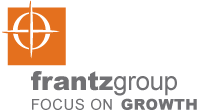
Successful demand generation takes an enormous amount of planning, ingenuity, and hard work. When the leads you worked so hard to generate fall out of your sales funnel, it represents a lot of lost potential revenue, as well as lost ROI for your marketing programs.
Frantz Group has learned many lessons on this topic in our 20 years of providing B2B marketing services. We have several approaches to help deal with dead leads, looking to re-engage these prospects and drive new dollars back into your pipeline. Of special benefit, working these kinds of opportunities late in the year can provide quick revenue rewards from organizations looking to utilize budget before the year closes out.
The 80/20 rule: It’s been estimated that about 20% of responders are truly followed up upon and engaged. Of those 20% that are contacted, most are disqualified (70%), yet 80% of the disqualified do wind up buying a solution within 2 years. In a world where our resources are stretched for time, we have a tendency to leave disqualified opportunities alone while chasing active pipeline. We should be looking to gradually nurture these leads until the point where they are back into a buying phase.
Sometimes, new leads get pushed into the pipeline too early, and sales reps are quick to eliminate those leads from their active follow-up roster. Deferred projects do come back to life. Frantz Group did a “re-engagement” program for one of our clients – we were able to convert 40% of the deferred opportunities back into the sales pipeline.
Regarding your initial disqualification of a lead, a sales rep frequently will label an opportunity as lost or deferred, hopefully adding a discernible reason, but where do you go from that point?
- How accurate is your follow-up process around disqualified leads?
- Are you confirming that a competing solution was purchased?
- If a competing solution was purchased, are you following up within 3-6 months to gauge their satisfaction with that solution? This is a great opportunity to uncover competitive data, fresh pains, unexpected costs, unanticipated implementation issues
- If you’ve determined that a project has been deferred, do you have an established nurture track that you can use to keep these prospects engaged over time?
If your ongoing nurture process includes some human touch points (as well it should), it represents a great opportunity to learn more about your target contacts and organization. How are business needs and roles evolving? Are new contacts involved in managing to this area of the business? If your original contact has changed duties, you’ll never learn this by only sending them occasional automated emails. Uncovering these additional decision makers and influencers can make or break the effectiveness of your ongoing nurture programs.
Frantz Group views this kind of program as being essential to driving the most ROI possible from your marketing efforts. This logic also applies with leads that you may be passing to channel solution partners. Establishing and growing relationships is the most effective way to grow your sales in the long term. Ensuring you have the right processes in place to handle disengaged opportunities is what makes that possible to do.
This post is our final entry in the Finish 2013 Strong series, we hope you’ve enjoyed reading these topics, and will continue with new and helpful topics in the near future.

